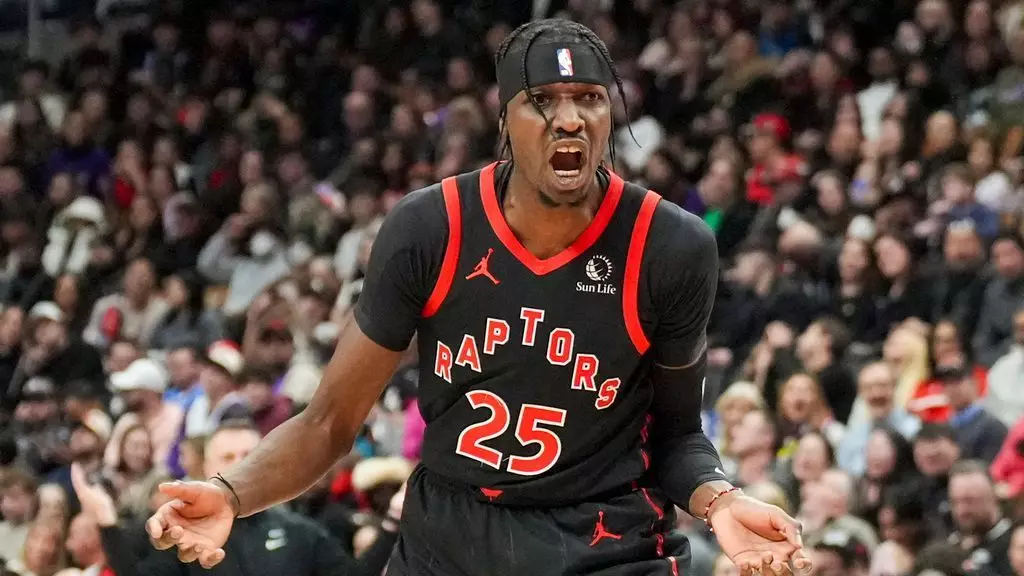In an era where every move counts, the Boston Celtics demonstrate a mastery of strategic roster manipulation to elevate their competitiveness. Trading Georges Niang—an experienced forward with a reliable three-point shot—and two future second-round picks to Utah exemplifies their commitment to calculated growth. This trade isn’t just about adding a rookie like RJ Luis Jr.; it signifies a conscious effort to reshuffle financial resources while bolstering the team’s long-term potential. The Celtics are not merely exchanging assets—they are orchestrating a financial rebalancing that allows flexibility for future signings and cap management. The infusion of talent through Luis, a promising 22-year-old undrafted talent from St. John’s, reflects the franchise’s belief in nurturing raw potential and adapting to an evolving league landscape.
By redirecting Niang’s over $8 million salary into Utah’s trade exception from the John Collins deal, Boston demonstrates a sophisticated approach to cap efficiency. This move underlines their willingness to adjust their payroll with an eye toward maintaining agility rather than overspending—an essential trait for sustained success in today’s competitive NBA environment. Such efficiency allows them to explore more aggressive moves without risking luxury tax penalties that could limit financial maneuverability down the line.
Smart Financial Planning Fuels Competitive Edge
Since the NBA draft, the Celtics have substantially trimmed their payroll, reducing it from a towering $540 million to a more manageable $239 million. This aggressive cleanup isn’t merely about cost-cutting; it’s a strategic repositioning that opens avenues for future acquisitions and roster flexibility. Saving $34 million in luxury tax penalties allows Boston to operate with a more flexible cap space, enabling them to remain adaptable as circumstances evolve during the season.
The signing of free agent Chris Boucher to a guaranteed one-year deal for $3.3 million reinforces Boston’s intentions to fortify their frontcourt without sacrificing financial stability. Boucher’s versatility and proven performance off the bench—set against his history with Toronto’s 2019 championship team—make him an invaluable addition. His role is poised to be significant, providing depth, energy, and shot-blocking prowess, critical facets for any title-contending team.
This financial recalibration underscores a broader philosophy: building a competitive roster isn’t solely about star power but also about optimizing each dollar spent. With their budget focused on meaningful roles rather than redundant contracts, the Celtics position themselves as a well-oiled machine, primed for sustained excellence.
Looking Toward the Future: Balancing Youth and Experience
The acquisition of RJ Luis Jr. reflects Boston’s forward-thinking mindset. Although undrafted, Luis’s potential and youth are attractive elements that could provide valuable minutes down the road. This is characteristic of a franchise confident enough to take calculated risks on players with high upside, supplementing their core with both seasoned veterans and promising youth.
Moreover, Niang’s return to Utah—where he previously spent four seasons—symbolizes the fluidity of NBA careers and the importance of smart asset management. The Celtics’ willingness to part with an experienced scorer in Niang reveals a focus on evolving team dynamics rather than holding onto familiar names. Their strategic depth is built on the premise that flexibility and adaptability, coupled with prudent financial planning, will ultimately yield a stronger, more cohesive team.
This series of moves exemplifies the modern NBA’s intricate dance between talent accumulation, cap management, and long-term sustainability. The Celtics are not resting on their laurels but actively reshaping their roster to stay competitive in an increasingly competitive league where innovation and flexibility are the keys to enduring success.

